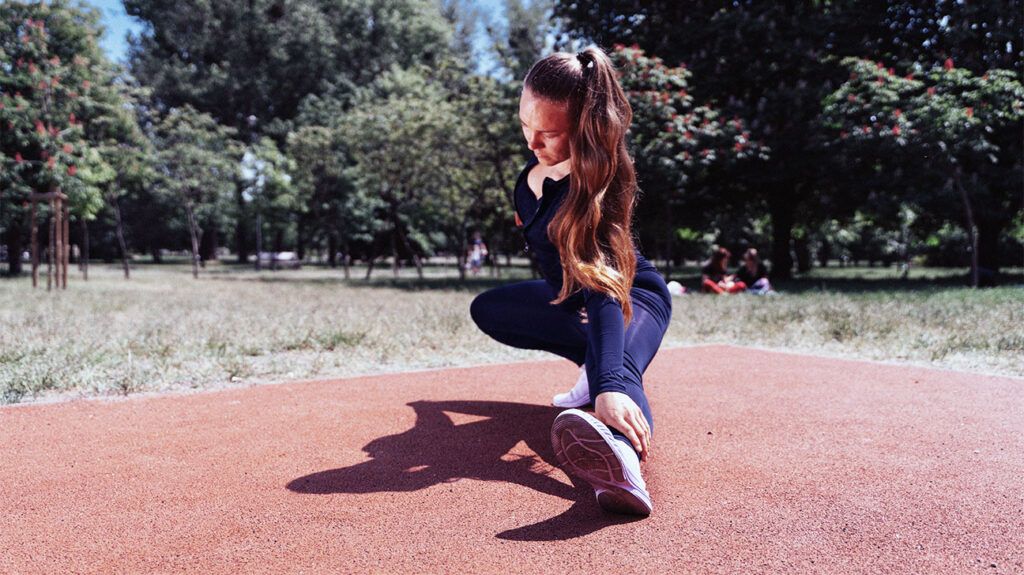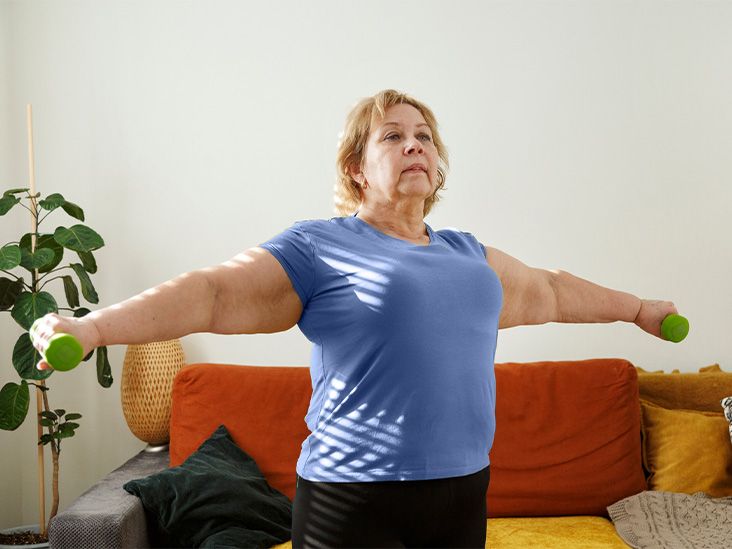Hip cracking or discomfort may cause someone to want to stretch or “pop” their hip back into place. To do this at home, people can try different methods, such as lunges, stretches, and yoga.
The hip is a major joint in the body. It is important for weight bearing and movement. Some factors that can affect hip health include age, weight, pregnancy, and injury.
Sometimes, a person’s hips may feel like they are no longer aligned properly. In some cases, a tight hip joint may be the only issue. At other times, the tight hip may be painful or make a cracking sound.
Most of the unlocking sensation is due to ligaments and tendons snapping over and around the joint. Sometimes, the sensation may be in the lower back, which is due to ligaments and tendons snapping over the lower back joints.
If someone is in severe, excruciating pain, they should go to the emergency department before trying any stretches or home remedies as they may have a hip fracture or dislocation.

Below are six exercises that may help a person unlock their hip at home. As with any stretch, a person should warm up first to help promote blood flow and flexibility.
1. Side lunge

A side lunge stretches the legs and hips.
For a side lunge, a person should do the following:
- Stand up straight with the feet set wide apart.
- Lean to the left and bend the left knee.
- Stretch as far as is comfortable and hold the pose for a few seconds.
- Repeat on the opposite side.
2. Butterfly stretch

The butterfly stretch can help stretch the hips and improve flexibility. People may feel their hip “pop” during the stretch.
To perform the butterfly stretch, a person should do the following:
- Sit on the floor with both legs bent at the knee and the soles of each foot touching.
- Keep the back straight while sitting down.
- Using the palms of each hand, gently push the knees down toward the ground.
- Hold the pose for a few seconds before gently releasing the knees.
For a slight variation on the butterfly stretch, people can also try a seated glute stretch. This stretch begins in the same seating position as the butterfly stretch.
However, instead of touching the soles of the feet together, a person tucks one foot into the opposite thigh. They should then lean forward and hold the pose for about 30 seconds.
3. Rotating hip in a chair

Similar to the butterfly stretch, a person can stretch one side of the hips at a time while sitting in a chair. To do this, follow these steps:
- Sit up straight in the chair with both feet firmly on the ground.
- Bring the right leg up to rest the right ankle on top of the left knee.
- Using the palm of the right hand, gently push the right knee toward the floor and hold for a few seconds.
- Repeat the stretch on the opposite side.
4. Pigeon pose

The pigeon pose will help to stretch the posterior hip. It is one of the more complicated poses and may require some practice.
Ideally, people should perform the pigeon pose on a soft mat to aid comfort and prevent injury.
To perform the pigeon pose, the individual should do the following:
- Begin the pose on the hands and knees.
- Bring the right knee forward to rest just behind the right wrist.
- Straighten the left leg out behind the body.
- Bring the right foot to rest behind the left wrist, so that the outer edge of the foot is resting on the mat.
- Lower the hips and left leg as close to the mat as feels comfortable.
- Hold the pose for up to 30 seconds.
- Repeat on the opposite side.
5. Kneeling hip flexor stretch

The kneeling hip flexor stretch may help to loosen tight hips and promote overall hip mobility.
To perform a kneeling hip flexor stretch, a person should do the following:
- Begin in a single leg kneeling position, with the left knee flat against the floor.
- Bend the right knee out in front, placing the right foot against the floor.
- Keep the back straight and gently contract the left glute.
- Gently move your trunk forward until feeling a stretch.
- Repeat on the opposite side.
6. Trunk rotation while standing

It is possible to stretch or “pop” the hip while standing. To do so, a person should try the following:
- Stand with the feet shoulder width apart.
- Hold a ball or clasp both hands together in front of the body at chest height.
- Gently twist the upper body to the left, as far as is comfortable, while keeping the lower body stationary.
- Hold this position for a few seconds.
- Return slowly to the center.
- Repeat on the opposite side.
There are certain risks and precautions that a person should be aware of when attempting to unlock their hip at home, including injuries. Below are some precautions people can take to reduce this risk:
- Warm up: Warming up before stretching and exercising may help to reduce the risk of injuries.
- Avoid sudden movements: Sudden, jarring movements may cause injury to muscles and tendons.
- Avoid certain stretches: People should avoid stretches that cause additional hip pain or discomfort or stretches they are not comfortable with, such as those that may put them off balance and increase the risk of a fall.
- Seek expert advice: Hip pain may be due to injury. In these cases, people should seek help from a healthcare professional before using hip stretches.
The medical term for cracking or popping joints is cavitation. Cavitation can occur because of air trapped inside the joint. This may happen for several reasons, including joint inflammation and a tight or restricted joint.
Other potential causes of hip discomfort include the following conditions:
A person may benefit from contacting a doctor if any of the following apply:
- the hip feels frequently or persistently misaligned
- they experience pain when the hip cracks
- the joint is stuck in a locked position
- they have excruciating pain
- they cannot bear weight on the hip
A doctor will diagnose any underlying issues and can recommend suitable treatments. Depending on the cause, treatment may consist of one or more of the following:
- over-the-counter or prescription pain relief
- physical therapy
- chiropractic care
- surgery
If a person’s hip feels locked or tight, they may feel the need to “pop” the hip back into place. Hip stretches that may help increase hip health and flexibility include a kneeling hip flexor, the butterfly stretch, and more.
People should warm up before stretching the hip. Stretching and performing exercises using controlled motions may help to reduce the risk of further injury.
If hip tightness occurs frequently or persistently or if pain occurs as well, it may be necessary to see a doctor. A doctor will diagnose the cause and provide suitable treatments.




